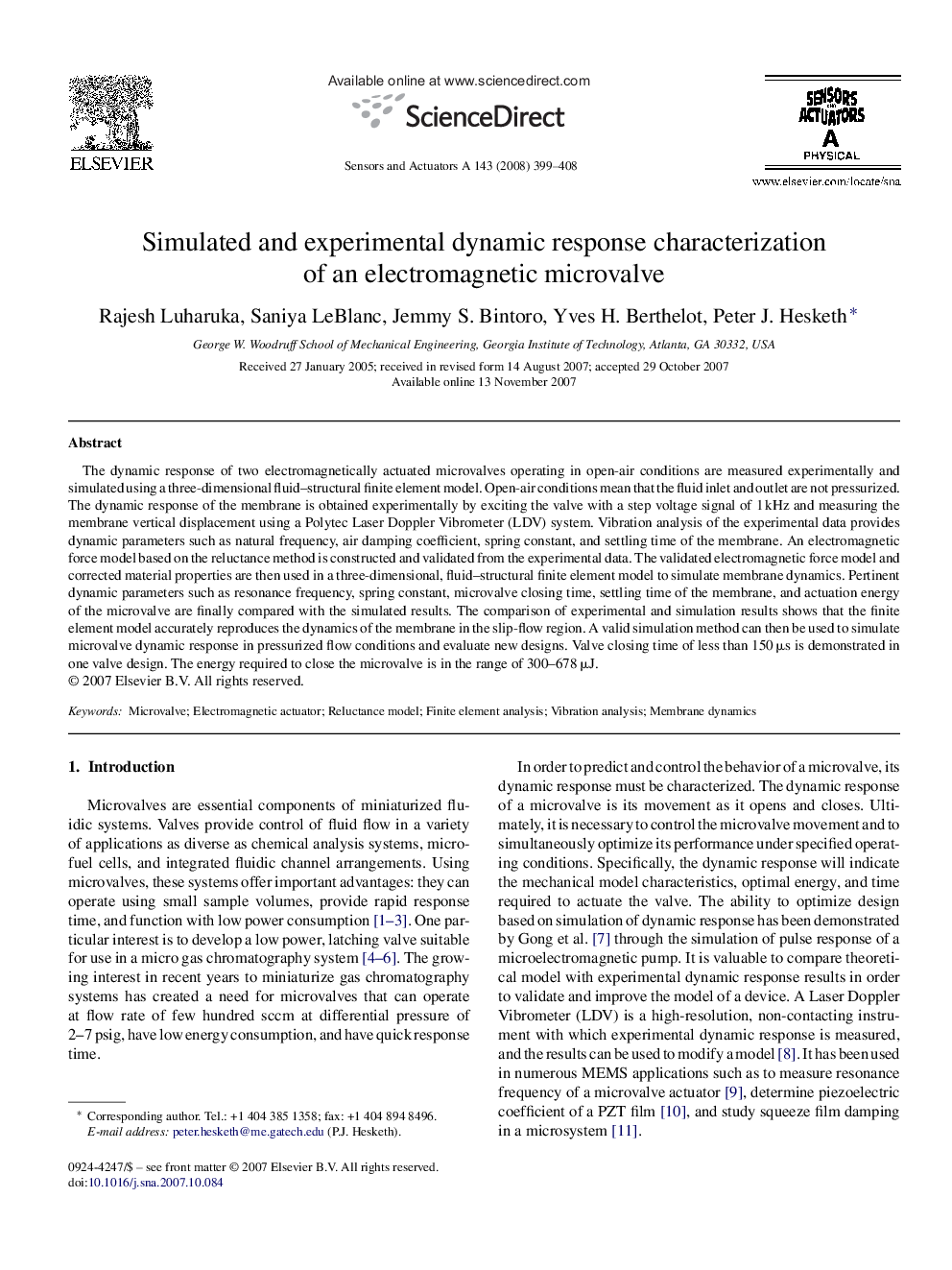| Article ID | Journal | Published Year | Pages | File Type |
|---|---|---|---|---|
| 738785 | Sensors and Actuators A: Physical | 2008 | 10 Pages |
The dynamic response of two electromagnetically actuated microvalves operating in open-air conditions are measured experimentally and simulated using a three-dimensional fluid–structural finite element model. Open-air conditions mean that the fluid inlet and outlet are not pressurized. The dynamic response of the membrane is obtained experimentally by exciting the valve with a step voltage signal of 1 kHz and measuring the membrane vertical displacement using a Polytec Laser Doppler Vibrometer (LDV) system. Vibration analysis of the experimental data provides dynamic parameters such as natural frequency, air damping coefficient, spring constant, and settling time of the membrane. An electromagnetic force model based on the reluctance method is constructed and validated from the experimental data. The validated electromagnetic force model and corrected material properties are then used in a three-dimensional, fluid–structural finite element model to simulate membrane dynamics. Pertinent dynamic parameters such as resonance frequency, spring constant, microvalve closing time, settling time of the membrane, and actuation energy of the microvalve are finally compared with the simulated results. The comparison of experimental and simulation results shows that the finite element model accurately reproduces the dynamics of the membrane in the slip-flow region. A valid simulation method can then be used to simulate microvalve dynamic response in pressurized flow conditions and evaluate new designs. Valve closing time of less than 150 μs is demonstrated in one valve design. The energy required to close the microvalve is in the range of 300–678 μJ.
